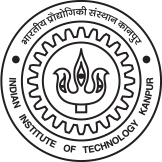
Prerequisites:
3-1-0-11
Course Contents
INTRODUCTION: Examples of non equilibrium phenomena (i) Glass transition; (ii) Nucleation; (iii) Phase separation; Experimental probes: Dynamic scattering; inelastic neutron scattering, THEORETICAL TOOLS: Two alternative theoretical approaches (a ) Langevin equation dissipation, nonlinearity and noise; Illustration with translational Brownian motion; (b) Fokker Planck equation diffusion and drift; Illustration with (i) translational Brownian motion, (ii) rotational Brownian motion. Master equation loss and gain of probabilities; concept of detailed balance . METASTABILITY AND BISTABILITY: Kramers theory of thermally activated barrier crossing applications in (i) chemical reactions (ii) rock magnetism. Enhancing signals with the help of noise applications of stochastic resonance in (a) nonlinear optics, (b) solid state devices, (c) neuroscience,(d) molecular motors and biological locomotion. Becker Doring Theory of homogeneous nucleation and its modern extensions applications in (a) condensation and (b) crystallization. UNSTABLE STATES: Allen Cahn scenario of interfacial dynamics and domain growth applications to domain growth in quenched magnets; Lifshitz Slyozov arguments for phase separation and its generalizations applications to (a) alloys, (b) fluid mixtures, (c) polymer mixtures. Theory of phase separation controlled by topological defects application to liquid crystals. Theory of coarsening of Cellular Patterns applications to soap froths (e.g., shaving foams). NONEQUILIBRIUM STEADYSTATES IN DRIVEN SYSTEM: Driven systems of interacting particles applications to vehicular traffic; Driven surfaces applications in molecular beam epitaxy (MBE).
Topics
Current Course Information
Instructor(s):
Number of sections:
Tutors for each section:
Schedule for Lectures:
Schedule for Tutorial:
Schedule for Labs:



